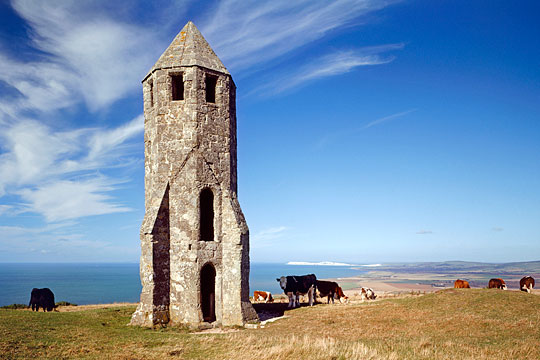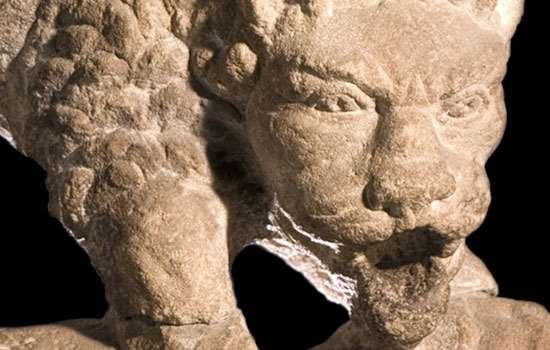History of St Catherine’s Oratory
St Catherine’s Oratory, which is situated on St Catherine’s Hill, Isle of Wight, overlooking Chale Bay, is the site of a prehistoric burial mound and a small medieval oratory, or chapel, the west tower of which is thought to have been used as a lighthouse.

History
It is likely that the oratory, completed in 1328, was erected by Walter de Godeton, a local landowner who was condemned by the Church for stealing casks of wine from a shipwreck which had occurred in 1314 off Chale Bay.
The ship was one of a fleet carrying a cargo of white wine for the monastery of Livers in Picardy. The Church threatened de Godeton with excommunication unless he built a lighthouse above the scene of the shipwreck, together with an adjoining oratory.
The oratory was to be endowed to maintain a priest to tend the light and to say masses for souls lost at sea. The duties were apparently carried out until the Reformation in the 16th century.
Description of the ‘Pepperpot’ Lighthouse
It is likely that the oratory, completed in 1328, was erected by Walter de Godeton, a local landowner who was condemned by the Church for stealing casks of wine from a shipwreck which had occurred in 1314 off Chale Bay.
The ship was one of a fleet carrying a cargo of white wine for the monastery of Livers in Picardy. The Church threatened de Godeton with excommunication unless he built a lighthouse above the scene of the shipwreck, together with an adjoining oratory.
The oratory was to be endowed to maintain a priest to tend the light and to say masses for souls lost at sea. The duties were apparently carried out until the Reformation in the 16th century.
Bronze Age Barrow
At a distance of 15 metres (49 feet) to the south-east of the tower is a much earlier monument, a Bronze Age bowl barrow, or burial mound, which was constructed on this hilltop site about 4,000 years ago.
Bowl barrows consisted of a mound of turf, soil or rock, covering one or more burials, and usually surrounded by a circular ditch from which the mound material may have been quarried.
This barrow, which is 20 metres (66 feet) in diameter and 2 metres (6 feet) high, was partially excavated in 1925, when human and animal bones and flint tools were discovered.
At some time during the medieval period, possibly during the construction of the oratory, a lime kiln was built into the side of the barrow. To the south are pits and mounds which may have resulted from mining chalk to provide lime for the kiln.
Further Reading
Hockey, SF, Insula Vecta: The Isle of Wight in the Middle Ages (Chichester, 1982)
FIND OUT MORE



